Themed collection 2013 Journal of Materials Chemistry C Hot Papers

Artificial multiferroic heterostructures
Recent developments in the field of artificial multiferroics are highlighted, with focus on electric-field control of magnetism and ultrafast dynamics.

J. Mater. Chem. C, 2013,1, 6731-6742
https://doi.org/10.1039/C3TC31428F
The power of branched chains: optimising functional molecular materials
Branched chains enhance the flexibility of organic optoelectronic materials, yielding high-performance optimised assemblies and new functional liquids.
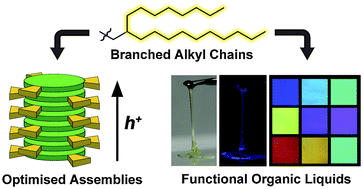
J. Mater. Chem. C, 2013,1, 6178-6183
https://doi.org/10.1039/C3TC31381F
Continuous and high-throughput nanopatterning methodologies based on mechanical deformation
This feature article reviews continuous and high-throughput nanopatterning techniques based on direct mechanical deformation for scalable sub-wavelength pattern fabrication.
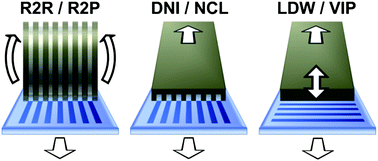
J. Mater. Chem. C, 2013,1, 7681-7691
https://doi.org/10.1039/C3TC30908H
Scalable bottom-up fabrication of colloidal photonic crystals and periodic plasmonic nanostructures
This Feature Article reviews a versatile spin-coating technological platform for scalably fabricating colloidal photonic crystals and periodic plasmonic nanostructures.
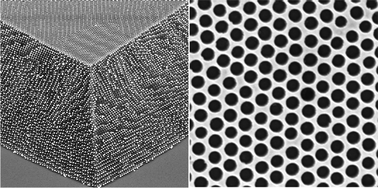
J. Mater. Chem. C, 2013,1, 6031-6047
https://doi.org/10.1039/C3TC30740A
Magnetically controllable colloidal photonic crystals: unique features and intriguing applications
We describe recent developments in magnetically induced self-assembly of colloidal photonic crystals, and discuss the emerging applications of this new technique.
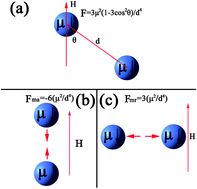
J. Mater. Chem. C, 2013,1, 6013-6030
https://doi.org/10.1039/C3TC30657G
Luminescent distyrylbenzenes: tailoring molecular structure and crystalline morphology
The specific implications of intermolecular arrangements on solid-state optoelectronic properties are discussed on the basis of a library of functionalized distyrylbenzenes.
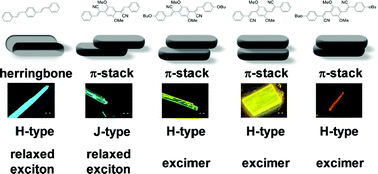
J. Mater. Chem. C, 2013,1, 5818-5832
https://doi.org/10.1039/C3TC31062K
Metal-ion doped luminescent thin films for optoelectronic applications
This feature article reviews the development in the design, fabrication, properties and optoelectronic applications of metal-ion doped luminescent thin films.
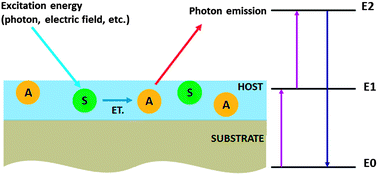
J. Mater. Chem. C, 2013,1, 5607-5618
https://doi.org/10.1039/C3TC31024H
A review of MBE grown 0D, 1D and 2D quantum structures in a nanowire
Self-assembled quantum structures in a nanowire (NW): quantum wells (QWs), quantum wires (QWRs) and quantum dots (QDs).
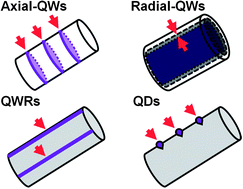
J. Mater. Chem. C, 2013,1, 4300-4312
https://doi.org/10.1039/C3TC30556B
Recent advances in mechanochromic luminescent metal complexes
This review summarizes recent advances in mechanofluorochromic metal complexes. AIE metal complexes are potentially significant sources of mechanofluorochromic metal complexes.

J. Mater. Chem. C, 2013,1, 3376-3390
https://doi.org/10.1039/C3TC30316K
Crystal structure and chemistry of topological insulators
Topological insulators are briefly introduced for a chemical audience, and their crystal chemistry and structures are described.
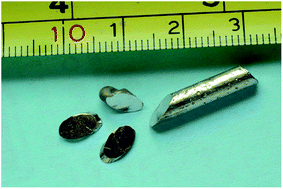
J. Mater. Chem. C, 2013,1, 3176-3189
https://doi.org/10.1039/C3TC30186A
Naphthodithiophenes as building units for small molecules to polymers ; a case study for in-depth understanding of structure–property relationships in organic semiconductors
This article presents the synthesis, properties, structures, and transistor applications of organic semiconductors based on naphthodithiophenes, new π-extended heteroaromatic building units.

J. Mater. Chem. C, 2013,1, 1297-1304
https://doi.org/10.1039/C2TC00261B
Soft X-ray characterisation of organic semiconductor films
This feature article highlights the versatility of soft X-ray based techniques for characterising the structure of organic semiconductor devices.

J. Mater. Chem. C, 2013,1, 187-201
https://doi.org/10.1039/C2TC00001F
Dynachromes – dynamic electrochromic polymers capable of property tuning and patterning via multiple constitutional component exchange
Converting a non-electroactive polymer into an electrochromic polymer via solid state on-substrate constitutional component exchange.

J. Mater. Chem. C, 2013,1, 6743-6747
https://doi.org/10.1039/C3TC31487A
Thermal metal deposition induces segregation in polymer thin films: a demonstration on OPVs
Schematic illustration and XPS spectra of polymer blend/air interface (left) and adjacent polymer blend/Al interface (right). The spectra clearly indicate the absence of PEG at the organic/air interface, as expected from surface energy considerations. In contrast, the blend/metal interface is PEG-rich due to its segregation from the blend induced by metal evaporation.
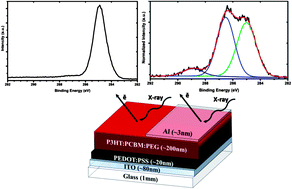
J. Mater. Chem. C, 2013,1, 6522-6525
https://doi.org/10.1039/C3TC31430H
A potential cyan-emitting phosphor Sr8(Si4O12)Cl8:Eu2+ for wide color gamut 3D-PDP and 3D-FED
Sr8(Si4O12)Cl8:Eu2+ phosphor with high emission intensity, suitable chromaticity coordinates and short decay time has potential application in wide gamut 3D-PDP/FEDs.
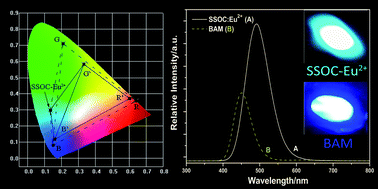
J. Mater. Chem. C, 2013,1, 1305-1308
https://doi.org/10.1039/C2TC00590E
Synthesis and photoluminescence of Eu3+-activated double perovskite NaGdMg(W, Mo)O6 – a potential red phosphor for solid state lighting
A novel high-efficiency double perovskite NaGdMg(W, Mo)O6:Eu phosphor with high-efficiency absorption and high doping concentration is reported.
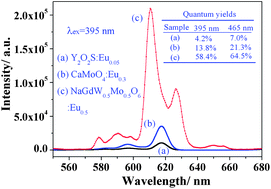
J. Mater. Chem. C, 2013,1, 54-57
https://doi.org/10.1039/C2TC00189F
Fabrication of Fe3+ doped Mg/Al layered double hydroxides and their application in UV light-shielding coatings
Mg/Al + Fe LDH based coatings exhibit high transparency, complete UV-shielding capability and long-term durability.
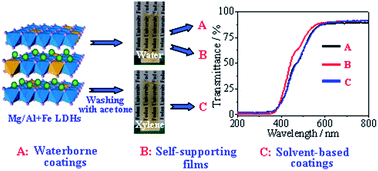
J. Mater. Chem. C, 2014,2, 5752-5758
https://doi.org/10.1039/C4TC00437J
Late stage crystallization and healing during spin-coating enhance carrier transport in small-molecule organic semiconductors
Spin-coating of TIPS-pentacene is examined in situ to reveal that residual solvent can heal structural defects and dramatically increase carrier mobility.

J. Mater. Chem. C, 2014,2, 5681-5689
https://doi.org/10.1039/C4TC00981A
Preparation of rod-like calcium titanyl oxalate with enhanced electrorheological activity and their morphological effect
Rod-like calcium titanyl oxalate particles were fabricated and their morphology effects on the electrorheological activity were investigated.
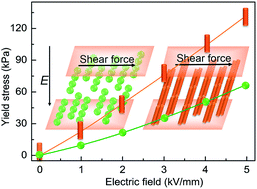
J. Mater. Chem. C, 2014,2, 5629-5635
https://doi.org/10.1039/C4TC00691G
Optically and electrically tunable graphene quantum dot–polyaniline composite films
The tunable photoluminescence and transport properties of PANI–GQD composite can be realized by adjusting the sizes of the GQDs and the amounts of PANI.

J. Mater. Chem. C, 2014,2, 4526-4532
https://doi.org/10.1039/C4TC00498A
Mode coupling between nonpolar and polar phonons as the origin of improper ferroelectricity in hexagonal LuMnO3
Currently, the most puzzling problem associated with the hexagonal LuMnO3 (h-LMO) is a large temperature-gap between the structural phase transition to the polar P63cm phase at ∼1290 K and the emergence of the spontaneous polarization at a substantially reduced temperature, ∼750 K.

J. Mater. Chem. C, 2014,2, 4126-4132
https://doi.org/10.1039/C4TC00182F
The effects of the crystalline orientation of Cu domains on the formation of nanoripple arrays in CVD-grown graphene on Cu
The effects of crystalline orientation of Cu on the formation of nanoripple arrays of graphene were investigated.

J. Mater. Chem. C, 2013,1, 7819-7824
https://doi.org/10.1039/C3TC31717J
Defect-sensitive crystals based on diaminomaleonitrile-functionalized Schiff base with aggregation-enhanced emission
Illumination defects: The crystals of an aggregation-enhanced emission luminogen turn on the fluorescence when exposed to external mechanical forces or ultrasonic vibrations, showing a defect-sensitive emission.
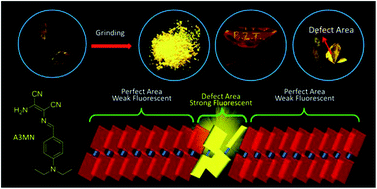
J. Mater. Chem. C, 2013,1, 7314-7320
https://doi.org/10.1039/C3TC31562B
Carbon nanotube and boron nitride nanotube hosted C60–V nanopeapods
We investigate electronic and transport properties of a novel form of nanopeapod structure, where the “pod” component is either a carbon nanotube (CNT) or a boron-nitride nanotube (BNNT) while the “pea” component is a chain of C60–V dimers.
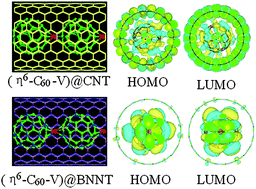
J. Mater. Chem. C, 2013,1, 4518-4526
https://doi.org/10.1039/C3TC30800F
The impact of crystal symmetry on the electronic structure and functional properties of complex lanthanum chromium oxides
Crystal symmetry is shown to have significant impact on the electronic (left), magnetic and optical (right) properties of complex oxides.
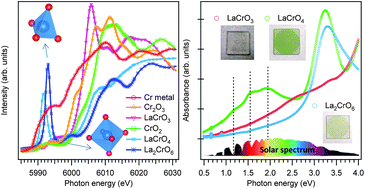
J. Mater. Chem. C, 2013,1, 4527-4535
https://doi.org/10.1039/C3TC30883A
A guanidine derivative of naphthalimide with excited-state deprotonation coupled intramolecular charge transfer properties and its application
Guanidine group on naphthalimide undergoes deprotonation/protonation with pKa of ∼8.5 in the ground-state and ∼0.9 in the excited-state. The emission properties are strongly dependent on the solvent environment.
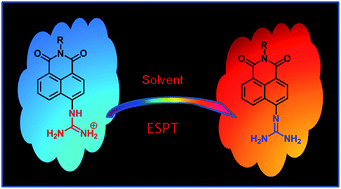
J. Mater. Chem. C, 2013,1, 4427-4436
https://doi.org/10.1039/C3TC30853G
Europium partitioning, luminescence re-absorption and quantum efficiency in (Sr,Ca) åkermanite–feldspar bi-phasic glass ceramics
We report on partitioning of europium in bi-phasic åkermanite–feldspar glass ceramics with broadly tunable photoluminescence.

J. Mater. Chem. C, 2013,1, 4078-4086
https://doi.org/10.1039/C3TC30609G
A photoswitchable and thermally stable axially chiral dithienylperfluorocyclopentene dopant with high helical twisting power
A new axially chiral dithienylperfluorocyclopentene with very high helical twisting power and phototunability in liquid crystal medium was reported.

J. Mater. Chem. C, 2013,1, 3917-3923
https://doi.org/10.1039/C3TC30611A
Colour selective organic photodetectors utilizing ketocyanine-cored dendrimers
Spectrally selective organic photodetectors based on a series of novel green-absorbing ketocyanine dendrimers have been developed for applications in machine vision.
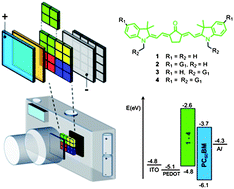
J. Mater. Chem. C, 2013,1, 3532-3543
https://doi.org/10.1039/C3TC30472H
First example of a non-toxic thermochromic polymer material – based on a novel mechanism
For the first time, a non-toxic thermochromic material operating by an aggregation/disaggregation of cyanidin dye has been developed.
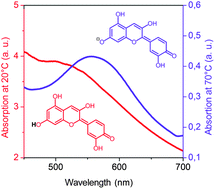
J. Mater. Chem. C, 2013,1, 2811-2816
https://doi.org/10.1039/C3TC30094C
The elastic and optical properties of a bent-core thiadiazole nematic liquid crystal: the role of the bend angle
This work highlights the subtle and substantial role played by the bend angle in determining the elastic properties of bent-core nematic liquid crystals.
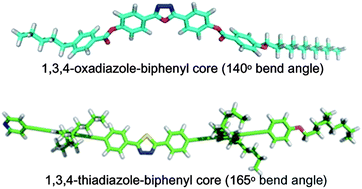
J. Mater. Chem. C, 2013,1, 2416-2425
https://doi.org/10.1039/C3TC00852E
Biomimetic zinc chlorin–poly(4-vinylpyridine) assemblies: doping level dependent emission–absorption regimes
Chlorophyll derived pigments, Zn chlorins, are self-assembled with poly(4-vinylpyridine) to form homogeneous films that show distinct doping level dependent energy transfer processes explained by the Förster theory.

J. Mater. Chem. C, 2013,1, 2166-2173
https://doi.org/10.1039/C3TC00499F
Effective excitation and control of guided surface plasmon polaritons in a conjugated polymer –silver nanowire composite system
A tunable exciton–plasmon coupling is realized in a conjugated polymer–silver nanowire composite system, making it possible to develop flexible plasmonic circuits.
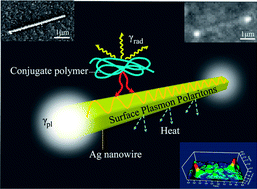
J. Mater. Chem. C, 2013,1, 1265-1271
https://doi.org/10.1039/C2TC00568A
Design of conductive crown ether based columnar liquid crystals: impact of molecular flexibility and geometry
The charge carrier transport in crown ether based columnar liquid crystals is strongly dependent on the mesogen's flexibility and geometry.
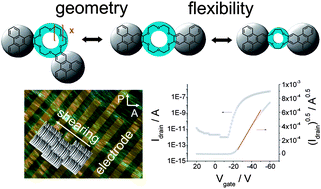
J. Mater. Chem. C, 2013,1, 892-901
https://doi.org/10.1039/C2TC00284A
Effects of self-assembled monolayer structural order, surface homogeneity and surface energy on pentacene morphology and thin film transistor device performance
A study of six SAMs to determine the relationship between SAM order, surface homogeneity, and surface energy in dictating FET device performance.
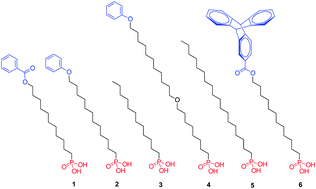
J. Mater. Chem. C, 2013,1, 101-113
https://doi.org/10.1039/C2TC00378C
Thermodynamic and electronic properties of tunable II–VI and IV–VI semiconductor based metal–organic frameworks from computational chemistry
From a systematic investigation 32 metal–organic frameworks, we predict 6 novel hybrid materials with semiconducting properties.
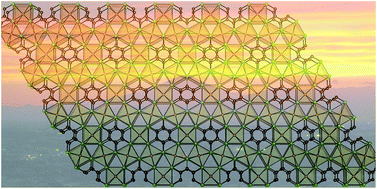
J. Mater. Chem. C, 2013,1, 95-100
https://doi.org/10.1039/C2TC00108J
Visible-light excited red emitting luminescent nanocomposites derived from Eu3+-phenathrene-based fluorinated β-diketonate complexes and multi-walled carbon nanotubes
This work focuses on the development of visible-light excited red emitting luminescent nanocomposites derived from an Eu3+-phenathrene-based fluorinated β-diketonate complex and multi-walled carbon nanotubes.
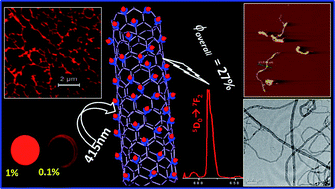
J. Mater. Chem. C, 2013,1, 160-170
https://doi.org/10.1039/C2TC00186A
About this collection
This web collection features all the articles published in Journal of Materials Chemistry C in 2013 that were marked as HOT, as recommended by referees. Selections of these were posted weekly on the Journal of Materials Chemistry Blog. Congratulations to all the authors whose articles have been featured!